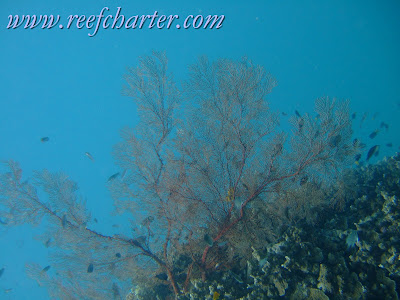Sailing the Santa Maria around the Great Barrier Reef is one of the privileges that we get to enjoy everyday.
Experiencing the romance and character of the historic wooden yachts is a rare experience and something our guests cherish for years, many becoming ‘addicted’ and returning many times for their fix. You can’t help as you sit with only a small group of people and share the water with a select few this is how nature was meant to be experienced.
Whether you want to experience snorkelling without the masses on the water or dive and explore the reef on your own terms and schedule, visiting the reef with small groups allows you to get a more personal and relaxed experience on the reef. Time spent with other passengers and our staff get you to enjoy and learn about the reef in a more intimate and one on one setting. It is an amazing difference as you dive, snorkel and relax on the outer Great Barrier Reef enjoying the coral and wildlife in a much more serene setting.
From Wintery London to the Australian Tropics
Qantas is offering some cheap flights from London to Cairns, Australia .These fares are available for departures 16 April to 20 June 2010.
London (Heathrow) to Cairns return economy from £753* Details Here
Offer ends 2 March 2010, unless sold out prior. Limited availability.
More Details available on the Qantas UK website.
While you are making your booking don’t forget to make sure you don’t miss out on going to the Great Barrier Reef, so book early.
Gorgonian or Fan Coral – Species of the Reef
The Gorgonian or Fan Coral as it is commonly refered to is one of the favourites of the scuba divers on our Great Barrier Reef trips. Best seen from underwater and not on top, it is one of the joys that only diving can truly allow you to appreciate. It is a soft coral that is easily damaged by coming to close so we tell everyone to stay a few metres (6ft) away at all times.
The fans are formed by the coral polyps building on top of each other in a vertical formation. The growth of the fan is very dependant on the temperatures and current of the water. The bigger and more flexible of the fans are found in areas with consistent currents while stiffer shorter species are found in calmer areas.
Brittles stars, algae and other species often call the fans their home. The use the structure as a great place to sit and feed on the nutrients that pass through the impressive gorgonian structures.
Blue Spotted Stingray – Species of the Reef
Another common site on the reef is the blue spotted ray. The blue spotted ray is found behind the reef face in the sandy bottom. It often buries itself in the sand, as seen above, so only its eyes appear above the surface of the sand. Being bottom feeders, their mouth is perfectly designed to scoop crabs, shrimp and fish. Instead of chewing its mouth is designed for a crushing motion rather then chewing before swallowing it’s meal.
The average blue spotted ray is about 30cm (12 inches) across the back. It is most commonly seen in depths ranging from about 6m – 20m. Sometime seen gracefully swimming over the coral beds on the reef as the photo below shows.
The male fertilizes the eggs inside the female where they remain, yes inside the eggs and inside the mother, until they hatch and she gives birth to live rays, known as pups.





